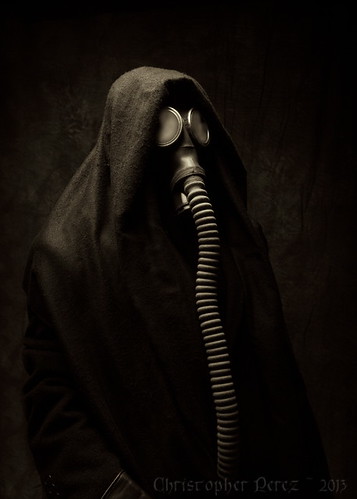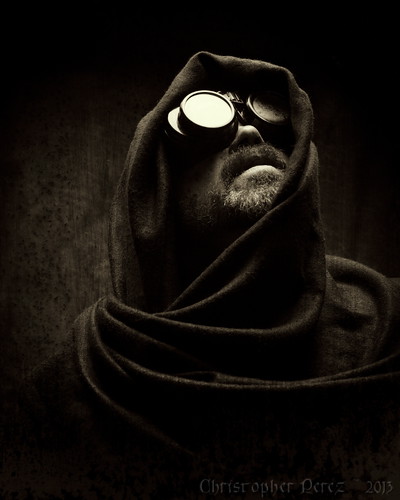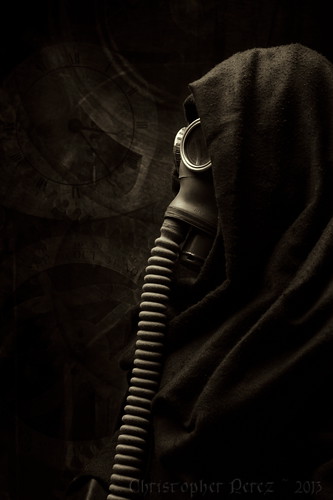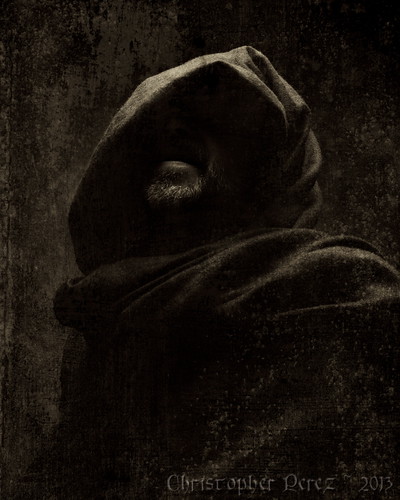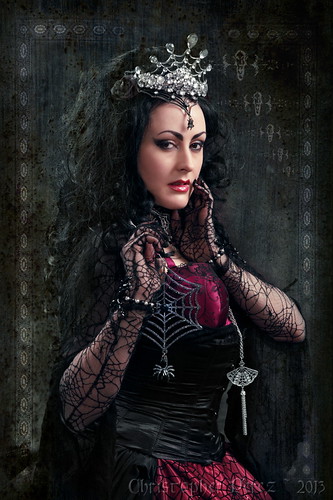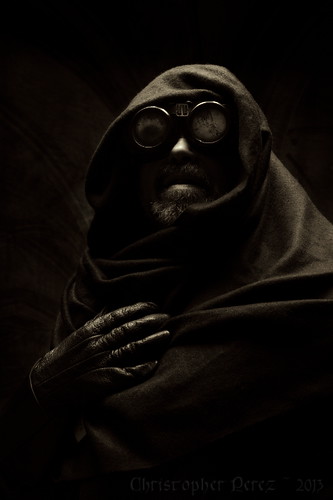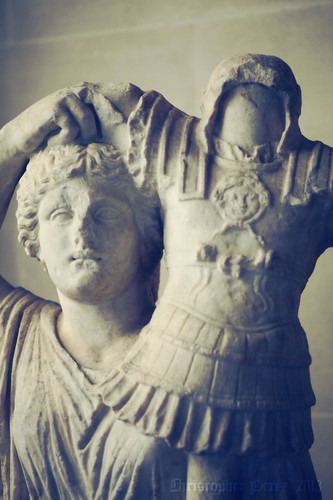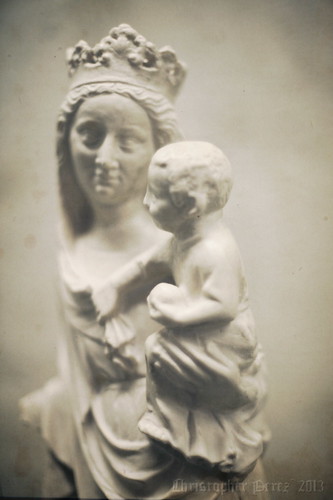A Wandering Mind is a sometimes fascinating thing to watch as it meanders from idea to thought to stumble across what ever is found on the path. Particularly when it's my own mind.
I friend, Pascal Jappy of Dear Susan blog fame, told me about his latest photographic project.
"Click" went my mind. "On" went some deeply recessed part of my brain.
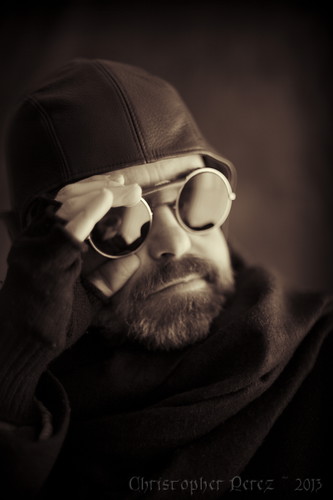
I recalled making platinum/palladium prints from digital negatives printed to Pictorico OHP Transparency Film using a pigment printer. Platinum/palladium prints, when properly prepared, are thought to be very archival. It was an enjoyable, simple process. A little UV light. A little very expensive Pt/Pd solution. Certain papers. A brush. A contact print frame. And away you go. Hmmm... OK... so maybe it wasn't so simple, but it was enjoyable. Print quality can be truly outstanding, as my friend Ray Bidegain's work attests to.
Making Pt/Pd images put me in the mood to emulate early large aperture long exposure photography. I love the way light works through the alternative process print and bounced back to the viewer in subtle and gorgeous ways. I also liked the idea of allowing a scene, as rendered by large aperture optics, to move from extremely sharp, narrowly defined areas into smooth, soft out of focus regions.
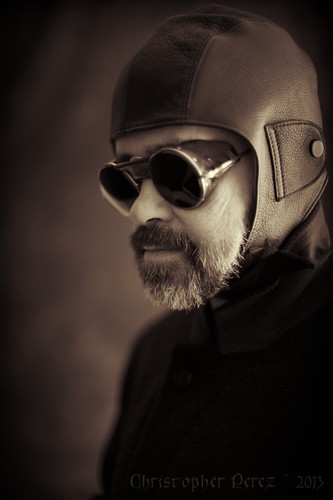
It is this last effect that I've been giving a lot of thought to since moving to digital capture. When I shot large format (4x5inch to 12x20inch view cameras, or what the French call les grandes chambres), optic effects were quite easy to achieve. Just take a long focal length optic and shoot it wide open. Or better yet, take an early portrait lens of long focal length and large (for it's time) aperture and watch as the magic manifests.
For me, it has been important to remember that what many people "feel" early photographs were like is actually not the case. I see where photographers make an emulation of an "early" print by using toy camera lenses that are not sharp, and give harsh out of focus area rendition.
Historically, you will see that even the earliest photographic images are extremely sharp on the plane of focus. Wander the aisles of any open air brocante in Paris and you will perhaps see what I mean.
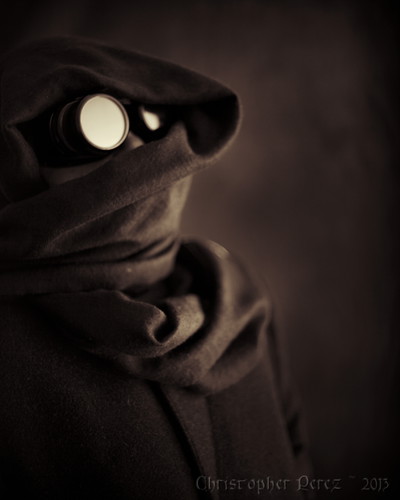
I worried (nay, obsessed) over how to achieve similar results using APS-C and Full Frame digital cameras. I looked at buying an adapter that allowed me to take large format lenses to shoot sections of a scene using a digital camera and to later stitch together a scene. While the approach was promising, it would mean re-purchasing camera equipment that I long ago sold. It also meant I would be limited to shooting static scenes requiring the use of a tripod. The whole setup begged to simply return to shooting film, which is not really viable, given our current living situation.
Thoughts, never giving up hope and faster than a speeding bollide, turned to see what kind of aperture I needed in Full Frame digital to match, say, a 300mm/12inch lens shot at f/11 on 8x10inch film format. That aperture setting is fairly bright on the format. I have a contact print I made of an image I shot of my father holding a classical guitar he built. It was shot on 8x10inch film using a Kodak 12inch Commercial Ektar f/6.3 with it's aperture set to f/11. Talk about a narrow depth of field! It's a gorgeous image, if I may say so myself (though it sits in storage in the US and I never scanned it to digital to share... oh well...).
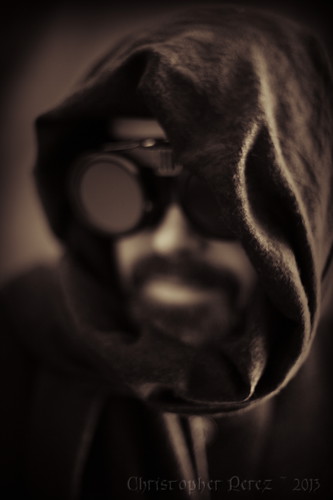
A depth of field calculator was found and I proceeded to investigate various lens speed/focal length combinations. It appeared my existing, inexpensively acquired (cheap!!!) Nikon Nikkor 50mm f/1.4 (pre-Ai) and Nikkor 85mm f/2 Ai lenses, shot wide open, could emulate the old large format solution. These are sharp optics. I sifted through a small stack of renowned lenses, rejecting a Nikkor 55mm f/1.2 as well as Nikon's highly vaunted fanboy vintage glass, the 85mm f/1.8 H (while fine stopped down, frankly, it was soft wide open), for find this pair of gorgeous image makers. I was looking for an excuse to use these lenses and that excuse had been found.
Putting the shout out for a model (better models should easily be found, but they're not), I found a lighting configuration that emulated early photographic tent studio light, set up a backdrop, calculated the exposure, arranged the materials, and away I shot.
When I started processing the images, I felt my now typical heavily textured approach would be a great way to express what I "felt" about vintage photographs... but... I wasn't completely pleased with the results. I had over-processed my work.
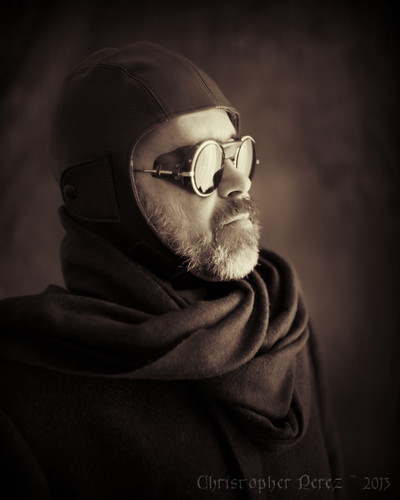
It turns out, direct, nearly straight out of the camera was closest to what I wanted to achieve. I fiddled with the curves just a bit and applied a tint taken from an early print. No sharpening nor blurring were needed.
Will I make Pt/Pd digital negative prints from these? I doubt it. I'm very pleased with the results as they stand. I may, however, try to find an imprimateur who can supply these printed on a good heavy weight cotton pigment digital print stock. You see, there is a photo-show coming up that I might want to display some of this work in.
What puzzles me, though, is why this simple, easy to achieve, quick to implement solution to my photographic problem took seven years and numerous complex investigations to solve?
I friend, Pascal Jappy of Dear Susan blog fame, told me about his latest photographic project.
"Click" went my mind. "On" went some deeply recessed part of my brain.

I recalled making platinum/palladium prints from digital negatives printed to Pictorico OHP Transparency Film using a pigment printer. Platinum/palladium prints, when properly prepared, are thought to be very archival. It was an enjoyable, simple process. A little UV light. A little very expensive Pt/Pd solution. Certain papers. A brush. A contact print frame. And away you go. Hmmm... OK... so maybe it wasn't so simple, but it was enjoyable. Print quality can be truly outstanding, as my friend Ray Bidegain's work attests to.
Making Pt/Pd images put me in the mood to emulate early large aperture long exposure photography. I love the way light works through the alternative process print and bounced back to the viewer in subtle and gorgeous ways. I also liked the idea of allowing a scene, as rendered by large aperture optics, to move from extremely sharp, narrowly defined areas into smooth, soft out of focus regions.

It is this last effect that I've been giving a lot of thought to since moving to digital capture. When I shot large format (4x5inch to 12x20inch view cameras, or what the French call les grandes chambres), optic effects were quite easy to achieve. Just take a long focal length optic and shoot it wide open. Or better yet, take an early portrait lens of long focal length and large (for it's time) aperture and watch as the magic manifests.
For me, it has been important to remember that what many people "feel" early photographs were like is actually not the case. I see where photographers make an emulation of an "early" print by using toy camera lenses that are not sharp, and give harsh out of focus area rendition.
Historically, you will see that even the earliest photographic images are extremely sharp on the plane of focus. Wander the aisles of any open air brocante in Paris and you will perhaps see what I mean.

I worried (nay, obsessed) over how to achieve similar results using APS-C and Full Frame digital cameras. I looked at buying an adapter that allowed me to take large format lenses to shoot sections of a scene using a digital camera and to later stitch together a scene. While the approach was promising, it would mean re-purchasing camera equipment that I long ago sold. It also meant I would be limited to shooting static scenes requiring the use of a tripod. The whole setup begged to simply return to shooting film, which is not really viable, given our current living situation.
Thoughts, never giving up hope and faster than a speeding bollide, turned to see what kind of aperture I needed in Full Frame digital to match, say, a 300mm/12inch lens shot at f/11 on 8x10inch film format. That aperture setting is fairly bright on the format. I have a contact print I made of an image I shot of my father holding a classical guitar he built. It was shot on 8x10inch film using a Kodak 12inch Commercial Ektar f/6.3 with it's aperture set to f/11. Talk about a narrow depth of field! It's a gorgeous image, if I may say so myself (though it sits in storage in the US and I never scanned it to digital to share... oh well...).

A depth of field calculator was found and I proceeded to investigate various lens speed/focal length combinations. It appeared my existing, inexpensively acquired (cheap!!!) Nikon Nikkor 50mm f/1.4 (pre-Ai) and Nikkor 85mm f/2 Ai lenses, shot wide open, could emulate the old large format solution. These are sharp optics. I sifted through a small stack of renowned lenses, rejecting a Nikkor 55mm f/1.2 as well as Nikon's highly vaunted fanboy vintage glass, the 85mm f/1.8 H (while fine stopped down, frankly, it was soft wide open), for find this pair of gorgeous image makers. I was looking for an excuse to use these lenses and that excuse had been found.
Putting the shout out for a model (better models should easily be found, but they're not), I found a lighting configuration that emulated early photographic tent studio light, set up a backdrop, calculated the exposure, arranged the materials, and away I shot.
When I started processing the images, I felt my now typical heavily textured approach would be a great way to express what I "felt" about vintage photographs... but... I wasn't completely pleased with the results. I had over-processed my work.

It turns out, direct, nearly straight out of the camera was closest to what I wanted to achieve. I fiddled with the curves just a bit and applied a tint taken from an early print. No sharpening nor blurring were needed.
Will I make Pt/Pd digital negative prints from these? I doubt it. I'm very pleased with the results as they stand. I may, however, try to find an imprimateur who can supply these printed on a good heavy weight cotton pigment digital print stock. You see, there is a photo-show coming up that I might want to display some of this work in.
What puzzles me, though, is why this simple, easy to achieve, quick to implement solution to my photographic problem took seven years and numerous complex investigations to solve?
